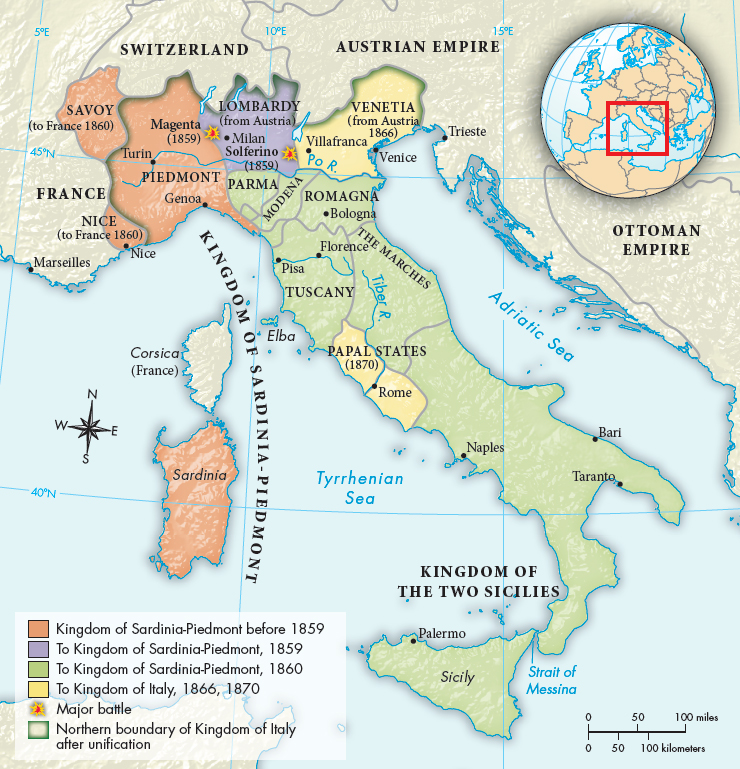Italy to 1850
Before 1850, Italy had never been united. The Italian peninsula was divided in the Middle Ages into competing city-
Between 1815 and 1848, the goal of a unified Italian nation captured the imaginations of many Italians. There were three basic approaches. First, the radical and idealistic patriot Giuseppe Mazzini called for a centralized democratic republic based on universal male suffrage and the will of the people. Second, Vincenzo Gioberti, a Catholic priest, called for a federation of existing states under the presidency of a progressive pope. Many Italians, though, looked to the autocratic kingdom of Sardinia-

This third alternative was strengthened by the failures of 1848, when Austria smashed Mazzini’s republicanism. Sardinia’s king, Victor Emmanuel II, crowned in 1849, retained the liberal constitution granted by his father under duress the previous year. To some of the Italian middle classes, Sardinia appeared to be a liberal, progressive state ideally suited to drive Austria out of northern Italy and lead a united Italy. By contrast, Mazzini’s brand of democratic republicanism seemed quixotic and too radical.
As for the papacy, the initial cautious support for unification by Pius IX (pontificate 1846–